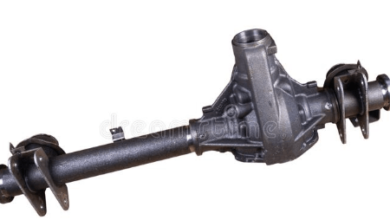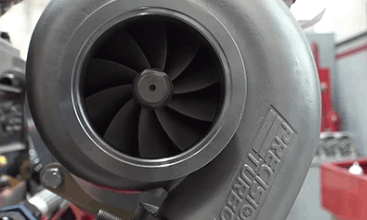How Close to Sidewall Can a Tire Be Patched? Simple Explanation
How close to sidewall can a tire be patched? This is the question that people are always asking about repairing their tires. Tire patching and tire plugging are easy ways to repair the punctures on your tire. So, you will not need to pay money to buy a new tire for your car. Here, we explain all the important points about how close to the sidewall can a tire ve patched.
How Close to Sidewall Can a Tire Be Patched?

The simple answer is 6mm. 6mm is a very important number that you need to consider for passenger car tires in general. Also, the depth o the treads of a car tire must be 6 mm in general. This means if the puncture on the tire is at the sidewall or tire shoulder, you can not apply the patching or plug on these places.
What is Sidewall?
The sidewall is a very important place on the car tire that is responsible to hold all the pressure inside the car tire and the load of the car. So, the stresses on the sidewall are very different and high at the sidewalls. And you can not apply regular paths or tire plugs to repair punctures on the sidewalls.
Shoulder of a Tire
Also, the shoulder means the curvature between the threaded section and the sidewall of the tire. You can not also apply patches or tire plugs to repair these sections. The general reason for this, is these are the sections that are prone to be most punctured. And if there is a weaker point such as a plug or patch on the shoulder, it is a very high probability that you will have big blowouts.
How to Measure the Pacthable Area?
Doint is a very simple process. First of all, you need to locate the side of the threaded section of the tire from the inside side. All the measurements must be made according to the inside section o the tire.
After you locate the correct position of the threaded section, measure 6 mm offset from the side of the threaded section from the inside.
Draw a circumference line that goes through this offset around the tire. The puncture must lay completely inside that line. This means you can easily apply a patch or plug without any problem.
Occasions to Do Not Apply Tire Patches
Also, you need to know the occasions that you can not apply tire patches to your tire damages. This is a very important thing that you need to consider.
- You need to be sure that the diameter of the puncture is lower than 1/4 inch or 6 millimeters. As we stated above, the 6 millimeters is the critical number for there also.
- If the puncture is directly on the sidewall or the tire shoulder. These are the areas where the stresses and forces are different than the threaded section of the tire. This means the patches and the tire plugs will not show the same performance as on the threaded section.
- If your tire has multiple injuries and patches and plugs, do not apply a tire patch on your tire. Because you will hurt the structure of your tire. And the total durability of your tire will be reduced.
- You can not use the tire if the depth of the tire tread is lower than 6 millimeters.
You Can Apply Tire Patches on These Occasions

Also, it will be better to know the general occasions that you can apply the tire patches without any problem.
- If the injury is not larger than 6 millimeters. Again, do not forget that the 6 millimeter is a critical diameter for the maximum puncture.
- As we explained above that the zone of the puncture is inside the 6mm zone.
- The angle of the puncture is bigger than 45 degrees.
- There are no punctures or repaired regions on the tire, you can use patches and plugs.
- Also, the sidewalls and the shoulder areas of the tires must be in good condition and must not have a punctured zone.
So, you need to know the occasions that you can apply the patches and plugs on your car.
Avoiding Punctures
Also, you need to know the general precautions that you can apply to your car tires. But it can be a situation that can happen to you anywhere. You just can bump into a pointed object on the road, and you need to patch your tire to go on to your road.
- Ideal tire pressure: The ideal tire pressure for your tires is a very important thing that you need to consider about them. So, be the ideal tire pressure range of the vehicle that you are driving, and be sure that you are driving in that range. Because tire manufacturers generally design their tires to be the most durable in that range.
- Use your steering wheel: While you are driving on bumpy and bad roads, you need to effectively use the steering wheel to refrain from the bad objects or pits on the roads. This will damage your tires and the subsets of your car.
- Do not overload the vehicle: All the vehicles and tires are designed for certain amounts of load-carrying applications. So, you need to take special care about not overloading. If you use your car in an overload position, this will make much higher stress on your tires. And the possibility of punctures will increase.
- Change the tires: In every 10.000 kilometers, change the places of the tires between themselves. For example, if the traction of your car at the front side, you need to change the tires on the rear side every 10.000 kilometers. Because the tires at the traction side will become old faster.
- Check and maintain your tires: Always check the depth of the treads and maintain your tires to the best available tire pressure for your car.
Quick Application of Plugs and Patches
The application of plıgs and patches are generally easy thigs that you can easily apply to your wheels.
Patches
If you want to quickly apply the patch on your tire puncture that we stated above, follow the steps below.
- First of all, you need to have a tire lever, a tire patch kit, sandpaper, and an air pump. Without one of them, you can not apply patches or plugs to your tires. So, you need to have all of them in your car for the emergencies like above.
- Before starting, you need to locate the place of the puncture on your tire. Be sure that the puncture is at the place where you can apply the patch.
- After that, if there is a stuck pointed part on the tire, you need to remove the air safely first. Open the cap of the valve, and press on the metal head with a pointed thing such as a screwdriver or pliers. Be sure that you took all the air.
- Then by using the lever, remove the tire from the rim.
- After removing, the tire, remove the part from the tire with care. Clean the surface around the puncture by using sandpaper. The surface provides a very good attachment section for the glue.
- Apply the patch and apply glue after it. And hold it for 5 min. After that, you can remove the excess parts of the patch. Be sure that all the hole is closed by the patch.
- After that, you can attach the tire to the rim by using a lever.
- Inflate the tire by using the air pump.
As you see, the application of the patch is very simple.
Plug
A plug is nearly the same as a patch. The only difference is, you need to attach the plug to the punctured area after the steps that we explained above. And take the plug with the help of a plier. Remove the excess section to get a plain and even surface. Attach the tire and inflate.
Last Words on How Close to Sidewall Can a Tire Be Patched
So we tried to answer this question. As you can understand that the critical number is 6 millimeters when it comes to tires.
If you have additional comments and questions about this topic, please leave them below.
Related topics;
What Tire Pressure is Too Low? Simple Answer
How to Let Air Out of Tire? Simple Explanation
Tire Cage for Occupational Safety – All Information You Need
How Long Does It Take to Patch a Tire? Quick Answer
FAQ
The stresses on the sidewall and closer regions on the sidewall are much higher than the treaded area. There is stress on the sidewall of the vehicles and the pressure of the air. And the application direction of the stress is quite different from the treaded area. Because of this reason, we do not apply a patch to the sidewall or the regions that are close to the sidewall of the tire.
The sidewall, the shoulder section, and the treaded section which is closer than 6 millimeters to the sidewall can not be patched.
Do not apply patches or plugs if the two punctures are closer to each other than 16″.
The simple answer is no. You can not repair a tire in this condition. It will be better to buy a new tire. But in most cases, the punctures take place in the treaded area. And you can apply patches or plugs without any problem.



